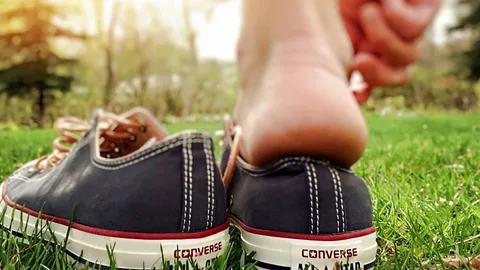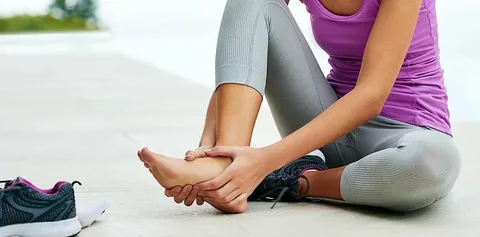Bone spurs are a common problem that can be difficult to manage. From the constant, painful pressure to the inability to move freely, it can be hard to find relief. But with the right footwear, you can help to ease the burden of your bone spurs. Shoes for Bone Spurs provide an effective and comfortable solution to help reduce the pain and discomfort associated with the condition. From their superior comfort to their support system, these shoes are designed to keep your feet healthy and happy.
What Are Bone Spurs?
Bone spurs, also known as osteophytes, are bony growths that develop on the edges of bones. They can occur in any part of the body but are most commonly found in the joints, such as the spine, shoulders, knees, and heels. These growths are often the result of the body’s natural response to constant stress, pressure, or inflammation in the affected area.
When bones are under stress, the body attempts to repair and strengthen them by creating extra bone tissue. However, over time, this can lead to the formation of bone spurs. While bone spurs themselves are not painful, they can cause problems when they rub against other bones, nerves, or soft tissues. This friction can result in inflammation, pain, and limited mobility.
Bone spurs are often associated with conditions like arthritis, plantar fasciitis, and tendonitis. They can cause symptoms such as joint stiffness, swelling, tenderness, and difficulty moving. It is essential to identify and treat bone spurs promptly to prevent further complications and improve quality of life. Now that we have a better understanding of what bone spurs are, let’s explore the symptoms, causes, and how choosing the right shoes can help alleviate the discomfort associated with this condition.
Symptoms of Bone Spurs
Bone spurs can cause a range of symptoms that can greatly impact your daily life. The most common symptom is pain. The pain may be dull and achy or sharp and stabbing, depending on the location of the bone spur. You may experience this pain when walking, standing, or putting pressure on the affected area. In some cases, the pain may radiate to nearby areas, causing discomfort in the surrounding muscles or joints.
Another symptom of bone spurs is limited mobility. The growth of bone spurs can restrict movement, making it difficult to fully extend or flex a joint. This can lead to stiffness and decreased range of motion, making everyday tasks challenging. Bone spurs can also cause inflammation and swelling in the affected area. This can result in tenderness and warmth, making it uncomfortable to touch or apply pressure to the site of the bone spur.
In some cases, bone spurs may also cause nerve impingement. When a bone spur presses against a nerve, it can cause tingling, numbness, or a burning sensation in the affected area. This can further contribute to discomfort and impact your quality of life. It is important to recognize these symptoms and seek proper medical advice for a correct diagnosis. With the right treatment, including proper footwear, you can effectively manage bone spur symptoms and improve your overall comfort and mobility.
Common Causes of Bone Spurs
Bone spurs can develop for a variety of reasons, and it’s important to understand the common causes behind their formation. One of the primary causes is chronic stress or pressure on the bones. This can be due to repetitive motions or activities that put excessive strain on certain areas of the body, such as running, jumping, or lifting heavy objects. Over time, this constant stress can lead to the development of bone spurs.
Another common cause of bone spurs is aging. As we get older, our bodies undergo natural wear and tear, and this can result in the growth of bone spurs. Osteoarthritis, a degenerative joint disease that often affects older adults, is a major contributor to bone spur formation. The breakdown of cartilage in the joints can lead to instability and friction, prompting the body to form bone spurs as a response to this instability.
In addition, certain medical conditions can increase the risk of developing bone spurs. Conditions such as rheumatoid arthritis, plantar fasciitis, and Achilles tendonitis can all contribute to the formation of bone spurs in specific areas of the body. Understanding the common causes of bone spurs can help you take preventive measures and make informed choices about your footwear. By choosing shoes that provide proper support and cushioning, you can minimize the stress and pressure on your bones, reducing the risk of developing bone spurs.
Why Choosing the Right Shoes Is Important For Bone Spurs
Finding the right shoes is crucial for managing the discomfort caused by bone spurs. Wearing the wrong footwear can exacerbate the pain, limit your mobility, and hinder your overall quality of life. That’s why it’s essential to choose shoes that are specifically designed to alleviate the symptoms of bone spurs.
The right Bone Spurs Shoes provide proper cushioning and support to reduce the pressure on your feet. They have features like arch support and shock absorption, which help to distribute your body weight evenly and minimize the impact on your bones. This reduces the friction and irritation caused by bone spurs, allowing you to move more comfortably. Additionally, the right Bone Spurs Shoes are made with high-quality materials that promote breathability and reduce sweating and odor. They have adjustable straps or laces to provide a secure fit and prevent unnecessary pressure on your feet.
By choosing the right shoes, you can significantly reduce the pain and discomfort associated with bone spurs. It’s important to prioritize your foot health and invest in shoes that are specifically designed to alleviate the symptoms of bone spurs. So, say goodbye to the agony and embrace the relief with Bone Spurs Shoes.
Benefits of Wearing Best Shoes for Bone Spurs
Finding the best shoes for bone spurs can provide numerous benefits and help alleviate the discomfort associated with this condition. One of the key advantages is the superior cushioning and support that these shoes offer. The extra padding and shock absorption technology help reduce pressure on your feet, providing relief from the painful symptoms of bone spurs.
Another benefit of wearing the Bone Spurs Shoes is the added stability and improved balance they provide. The right shoes will have a firm yet flexible sole that helps distribute your weight evenly, reducing strain on your bones and joints. This can help improve your posture and prevent further damage to your feet. Furthermore, these shoes are often made from high-quality materials that are breathable and promote proper air circulation. This helps keep your feet cool and dry, preventing excessive sweating and odor.
Choosing the Bone Spurs Shoes can also enhance your mobility and allow you to move more freely. These shoes are designed to provide maximum comfort and minimize friction, allowing you to go about your daily activities with ease. In summary, the benefits of wearing the Bone Spurs Shoes are improved cushioning, support, stability, and breathability. They help alleviate pain, improve mobility, and enhance overall foot health. Investing in these shoes is a smart choice for anyone looking for long-term relief from bone spurs.
Orthotic Support Helps Reduce Bone Spurs
Orthotic support plays a crucial role in reducing the discomfort caused by bone spurs. These specially designed shoe inserts provide additional cushioning and support to alleviate the pressure on your feet, allowing you to move with greater ease and comfort.
Orthotics are custom-made inserts that fit inside your shoes and provide targeted support to specific areas of your feet. They help to distribute your body weight evenly, reducing the strain on your bones and joints. By promoting proper alignment, orthotics can help alleviate the symptoms of bone spurs, such as pain, inflammation, and limited mobility.
The supportive nature of orthotics helps to prevent excessive rubbing and irritation caused by bone spurs. They create a barrier between the spur and surrounding tissues, reducing friction and inflammation. Orthotics can also help stabilize the affected area, providing additional support and reducing the risk of further complications.
With orthotic support, you can find relief from the discomfort of bone spurs and improve your overall quality of life. Consult with a healthcare professional or a podiatrist to determine the best orthotics for your specific needs and experience the benefits they offer.
FAQs
Q: Are Bone Spurs Permanent?
A: Yes, bone spurs are typically permanent. Once they form, they are unlikely to go away on their own. However, with the right treatment and footwear, you can effectively manage the symptoms and reduce discomfort.
Q: Can Wearing The Wrong Shoes Make Bone Spurs Worse?
A: Absolutely. Wearing ill-fitting shoes or ones without proper support can exacerbate the pain and limit your mobility. It’s crucial to choose shoes that are specifically designed to alleviate the symptoms of bone spurs.
Q: Can Orthotics Help With Bone Spurs?
A: Yes! Orthotic inserts provide additional cushioning and support, reducing the pressure on your feet. They can help distribute your body weight evenly and promote proper alignment, alleviating the symptoms of bone spurs.
Conclusion
In conclusion, choosing Bone Spurs Shoes for your footwear needs is a smart decision for anyone suffering from bone spurs. These shoes offer superior comfort, support, and relief from the pain and discomfort associated with this condition. With their cushioning, shock absorption, and arch support, Bone Spurs Shoes help reduce pressure on your feet and minimize the friction caused by bone spurs.



